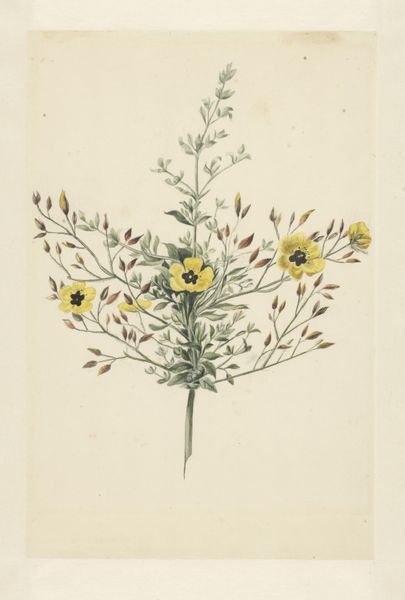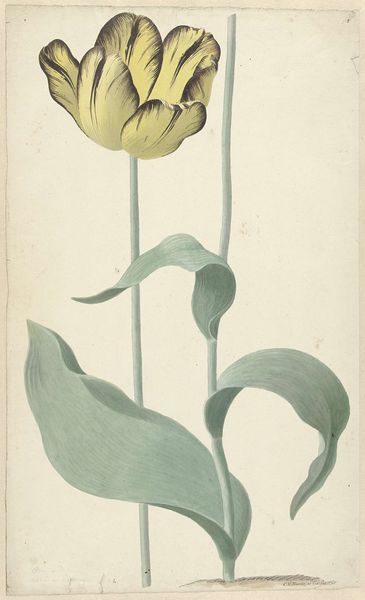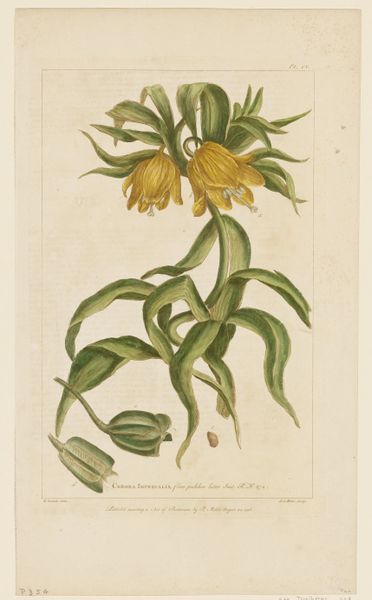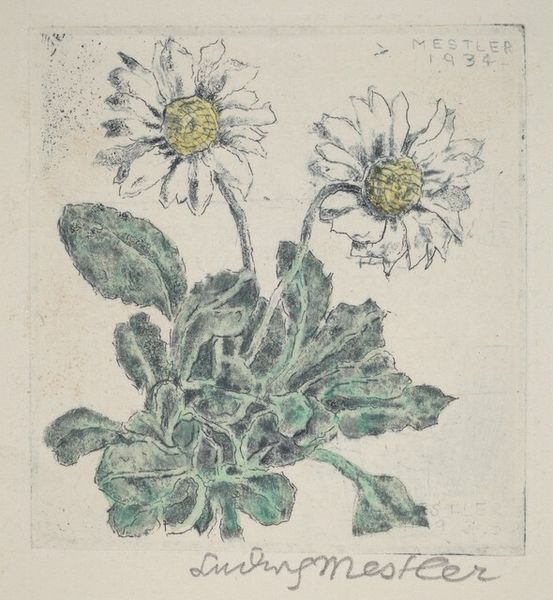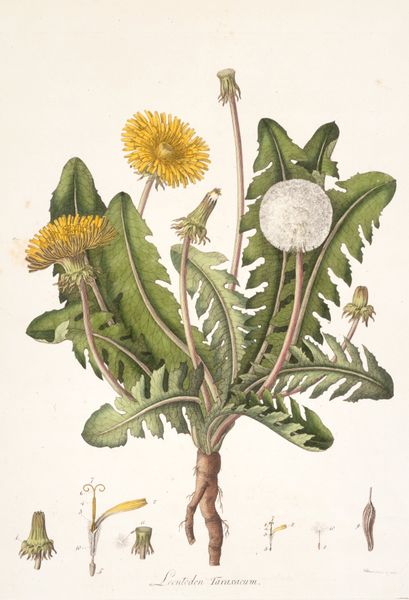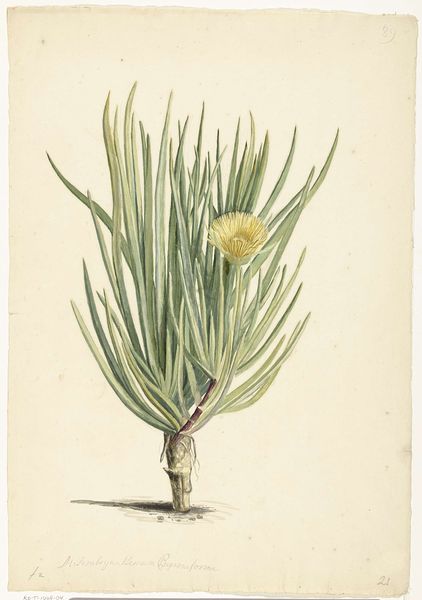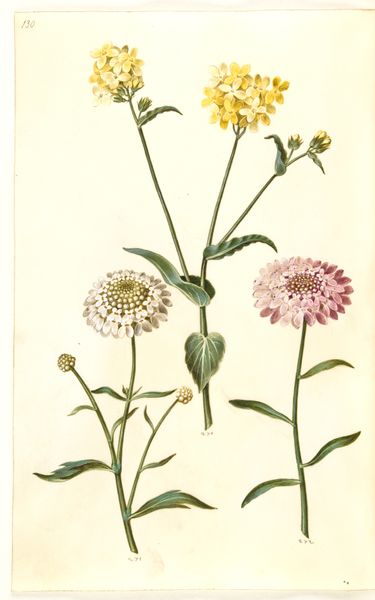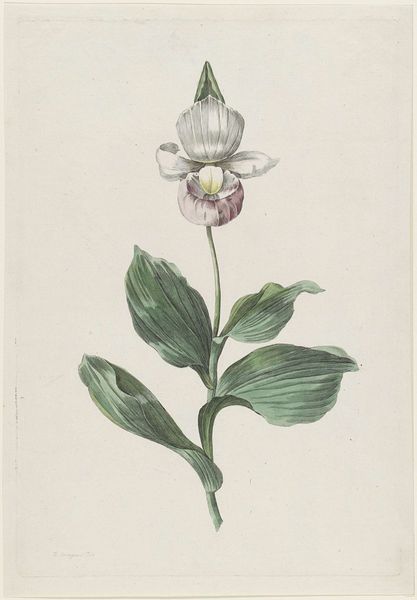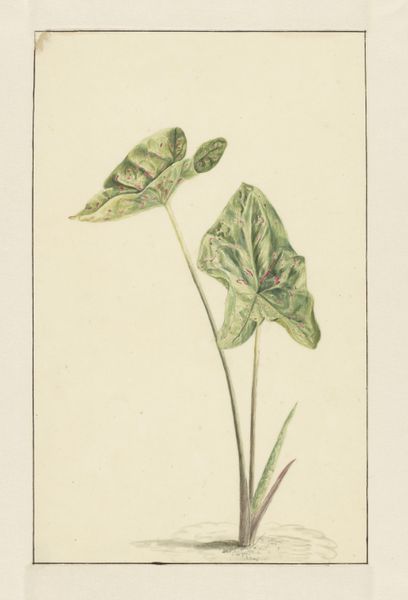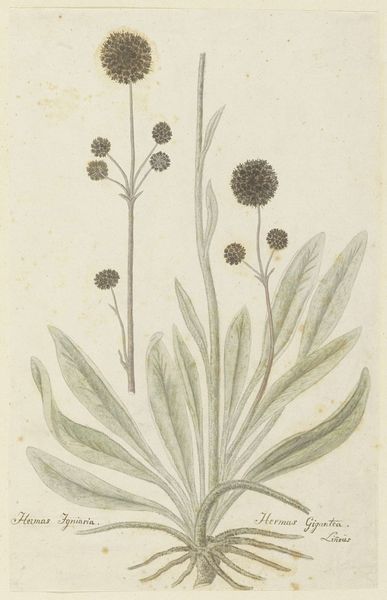
drawing, plein-air, watercolor
#
vegetal
#
drawing
#
plein-air
#
botanical illustration
#
watercolor
#
plant
#
botanical drawing
#
watercolour illustration
#
botanical art
#
watercolor
Dimensions: height 285 mm, width 237 mm
Copyright: Rijks Museum: Open Domain
Curator: Laurens Vincentsz van der Vinne's "Bloeiende Mesembryanthemum," likely rendered between 1668 and 1729, presents us with a watercolor drawing of a flowering succulent. It’s currently held in the Rijksmuseum collection. Editor: It feels quite stark, doesn't it? The flower head is almost luminous against that rather blank background, and the plant itself looks... prehistoric, in a way. The muted greens accentuate the delicate petals. Curator: The almost clinical precision aligns with the broader cultural interest in botany during that period. Gardens became status symbols and the depiction of flora turned almost into a scientific pursuit. This work echoes plein-air practices where artists studied plants directly from observation. Editor: Absolutely. The composition focuses intently on the plant's structure. Consider the radiating pattern of the succulent's leaves against the verticality of the stem. And observe the shadow: it’s as if the artist is pinpointing a very particular moment in time and light. There's a formal elegance, even in the seemingly simple depiction of this mesembryanthemum. Curator: Also think about the function of botanical illustrations in the 17th and 18th centuries. They documented the natural world, of course, but also played a crucial role in knowledge dissemination within scientific communities and even within the broader colonial projects that made plants such as the Mesembryanthemum accessible for study and popularization. The exchange of images fostered further knowledge. Editor: Yes, and within that, we see the interesting negotiation between art and science. The watercolor medium lends a degree of softness, almost like an emotional observation alongside botanical detail. It's not *just* a clinical record, but it invites the eye into contemplation. The choice of this specific angle provides us, as viewers, access to appreciate this plant in a three dimensional manner. Curator: Precisely! And reflecting on it all, it gives this watercolor drawing, simple as it seems, some historical gravitas alongside its quiet formal beauty. Editor: Indeed. The precision offers its own compelling narrative and it speaks to broader dynamics of the period that it was crafted.
Comments
No comments
Be the first to comment and join the conversation on the ultimate creative platform.
